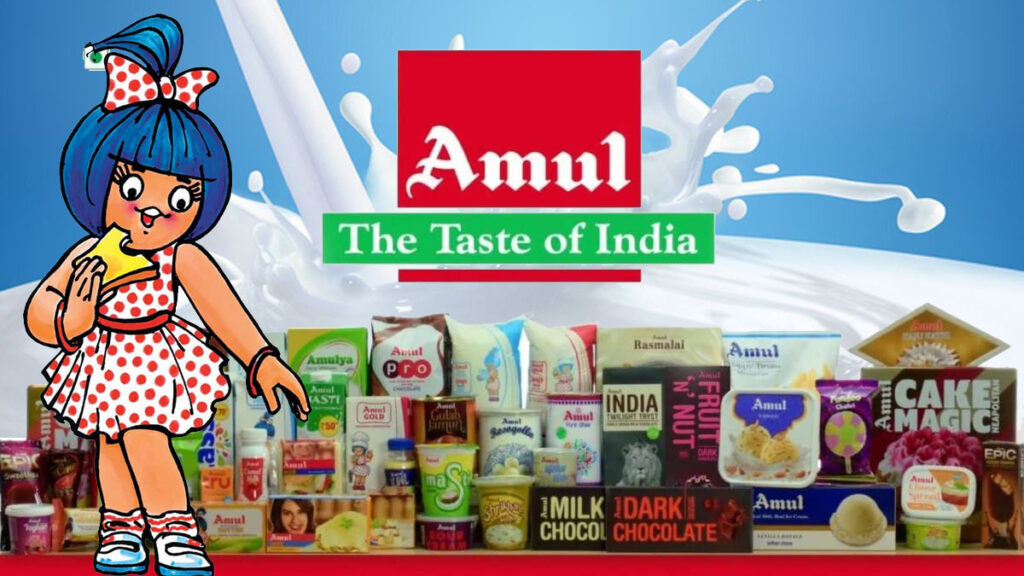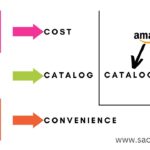Amul Situation During Pandemic
On the 24th of March 2020, our Prime Minister announced a nationwide lockdown because of the pandemic. What followed next was a nightmare that our nation was not prepared for. Millions of people, especially laborers lost their jobs, several billion-dollar industries came to a standstill, and it cost the Indian economy more than 10 lakh crores. One such industry that was heavily impacted due to the pandemic was the dairy industry. It cost the milk producers of India more than 112.3 crores every single day. But you know what guys? There was one legendary company that was so strategically able to navigate through this situation. They did not just minimize their losses but even went one step further to increase their revenue by 698 crores. This brand that I’m talking about is none other than Anand Milk Union Limited which we all so dearly know as Amul. Now, everybody knows the story and history of Amul and how it has been there for decades. But very few people know how incredible this AMUL business strategy is. And one such mind-blowing example of the same is how Amul reacted to COVID-19.
Business Strategy of Amul during Pandemic
Amul has done such an extraordinary job during the COVID times that in 2020 itself while the rest of the companies were struggling to even keep their supply chain going Amul went on to produce 33 new products in the market and procured an additional 35 lakh liters of milk every single day and even paid 800 crores extra to the rural milk producers of India. How did Amul manage to achieve such an incredible feat? What are the business strategy lessons that you and I need to learn from this case study to become extraordinary business leaders?
1. Supply Chain of Amul
The answer to this question lies in the extraordinary supply chain management of Amul. When the lockdown was announced in March the dairy industry was allowed to operate with certain restrictions. Because milk came under the essential goods category. But as soon as the announcement of the lockdown was done. Several businesses either cut down or closed their businesses. This resulted in the loss in demand for the dairy industry because these industries also included the restaurants, catering and hotel businesses.
these businesses accounted for 20% of the revenue for the organized dairy sector. As a result, Amul’s sales also saw a decline of 10-12%. And when the dairy companies saw this massive fall in demand, they quickly cut down the milk procurement, decreased their logistics, and decreased their production by a large extent. This left many farmers in a helpless state. Because milk procurement was very less. Many laborers such as truck drivers and factory workers lost their livelihood because less milk meant fewer trucks and less operation of factories.
While the entire dairy industry was preparing for a loss in demand. Amul did the complete opposite and started preparing for a surge in demand.
The question is when it’s being seen that there is a major decline in demand from the restaurants and the hotels that account for 20% of the revenue. Why would anyone prepare for a surge in demand? Isn’t that like a 1000 crore gamble? Well, guess what?
There was one very important variable that very few people took into consideration and that was the change in consumer behavior. Now, if you remember what we’ve learned from the “Airbnb case study” every time there is a crisis of any kind, there is a paradigm shift in consumer behavior. In this case, although there was no demand from the restaurants the household consumption of milk products skyrocketed as more and more people began to stay at home. And this, in turn, gave rise to the homemade food trend. Because of this, the demand for both, groceries and milk products skyrocketed. And secondly, because of the pandemic people became extremely health-conscious. Millions of people shifted from buying loose milk to buying packaged milk. And while other brands underestimated this consumer demand and started decreasing their supplies.

Image by Opindia.com
The managing director of Amul, Mr. Rupinder Singh Sodhi, insisted that they keep the supply chain functioning at full capacity. And guess what?
Despite the closure of the restaurants as of May 2020, during the peak of the lockdown times, the demand for milk-based products skyrocketed. The demand for cheese increased by 80%, the demand for cottage cheese increased by 40%, and the demand for condensed milk increased by 100%.
Well, Amul plans for operating at 115% capacity. The demand for Amul products was so high that they had to hire other plants from other companies that were lying vacant. Except for ice creams, all their plants were operating at full capacity throughout the lockdown. And on top of that, they also realized that moving trucks through the country will be very difficult because of the shortage of labor and the lockdown restrictions. So, they started using railways to transport products quickly throughout the countries. Now this begs the question, considering the vast supply chain of Amul (I mean, we are talking about 18,700 societies, 5000 milk tankers going to 200 chilling stations, 10,000 distributors, 1 million retailers, and most importantly more than 3.6 million farmers.)
3. How did Amul manage to coordinate such a huge supply chain and manage its resources properly?
2. Digital Infrastructure
The answer to this question lies in a strategic partnership that was established between Amul and IBM in 2009. Wherein Amul invested a hefty 80 crores into transforming the information technology landscape of the company. 
Image by Business Today
Now, what this meant is that IBM would develop a full-fledged digital system to track every small detail of operation that is being carried out in the supply chain of Amul. And just like we get an update about our Amazon order through IBM’s system, the management team of Amul could exactly tell you how many plants were working at full capacity. how many trucks are engaged? and in which areas? and most importantly it could also tell you when and how many trucks or plants are at idle capacity. So that you can direct the workload to them to make optimum utilization of every element of the supply chain. And this system turned out to be a game changer for Amul during the lockdown.
Because while on one side the supply chain of milk was overloaded the ice cream and frozen foods vertical of the business was almost shut down. Therefore, the labor, storage, and trucks were lying at idle capacity from the end of ice cream and frozen foods. But thanks to IBM’s system. Sodhi Sir and the team were able to accurately oversee the entire operation of the supply chain. And they very conveniently diverted all the idle resources from the ice cream and frozen foods vertical to the milk supply chain. And all of this process is said to have happened overnight. And this end-to-end digitalization made the process so efficient and gave them so much clarity about their operations.
Amul was even able to provide incentives for the ground staff. The casual workers were given 100-125 rupees cash incentives and for the workers, even food and stay arrangements were made. So that they don’t get sick and they don’t get affected by COVID. And when they realized that the cattle feed was not sufficient Amul even made extra arrangements for cattle feed for farmers. And all of this made the supply chain of Amul so efficient and effective. While the rest of the dairy industry was completely shut down. Amul tapped into their market share and procured 3.5 million liters of extra milk every single day and paid 800 crores extra to the rural milk producers of India.
A fun fact over here is that Amul even used 3rd party e-commerce sites like Bigbasket, Dunzo, and Flipkart and even landed exclusive deals with Swiggy and Zomato to sell butter, milkshake, and paneer. And according to Sodhi Sir in May itself they got more than 60,000 delivery orders through Zomato. They sold 3 crores worth of Amul products in more than 200 cities. This was the second pillar of their historic success, which is the end-to-end digitalization of the entire supply chain and the incentivizing of the labor forces.
3. Marketing Strategies of Amul
People, during the months of COVID when other brands were cutting down on their advertisements Amul increased its ad volumes by 316% compared to 2019. And they were so aggressive with their campaign that the Amul Kool ad was viewed 10 times more than the Indian Premiere League (IPL) itself. And when Doordarshan started re-broadcasting the epic shows like Ramayan and Mahabharat during lockdown Amul started running their old ads to resonate with the nostalgic mood of the audience, creating an even better impact. Now, the highlight over here is that although Amul was very keen on tapping onto the marketing opportunities and even made immunity-boosting products they never went overboard with any kind of ridiculous COVID claims unlike some other brands in our country.
This is how using an extraordinary foresight of consumer behavior through an agile supply chain management system. using digital transformation, third-party collaboration, incentivizing labor and strategic marketing initiatives Anand Milk Union Limited established a benchmark for crisis management for dairy companies from all across the world to follow.
What are the lessons that we need to learn from Amul Business Strategies?
- While good leaders prepare to face risk great leaders prepare to embrace risk with open arms. In this case, while most companies prepared to prevent their losses Sodhi Sir prepared Amul to operate at full capacity even during the pandemic one of the reasons was such a bold decision was the fact that he had already seen how his senior leaders kept the company going despite the floods, despite the curfew and even during a war situation.
- No matter how big your organization is resourcefulness is one attribute that will always save you during a crisis. The only question is how are you going to build such an agile system. In this case, it was Amul’s futuristic investment of 80 crores into IBM’s systems that helped them operate such a huge supply chain in such an optimized manner.
- Every time there is a crisis of any kind, it could be a pandemic it could be a crisis specific to your industry always remember during such a time that you can either choose to see it as an obstacle or you can choose to see it as a golden opportunity to get ahead of your competitors. In this case, Sodhi Sir was so sharp that he realized that COVID-19 was the perfect opportunity for him to capitalize on the market on every single front.
Summary (Amul Business Strategies During Pandemic)
- He increased his market share and got the customers who were transitioning from loose milk to packaged milk.
- All the farmers who were denied procurement from restaurants and other companies rushed to Amul, giving Amul 3.5 million liters of extra milk every single day. Hence, Amul was able to establish itself as a savior for farmers.
- While the industry was ruthless in cutting down its frontline workers Amul provided the same workers with added incentives, therefore, building a very strong relationship with its frontline workers.
This is how Amul became an opportunist during times of crisis and established a benchmark for brands all across the world to learn from. And I couldn’t be more grateful to have the privilege to present this case study to you.
If you find this case study valuable, please Write in the comment below. This Motivate me to write more content like this.




Pingback: Lijjat Papad Success Story | How 7 Women made 1600 Cr Empire - SachinThakur.in